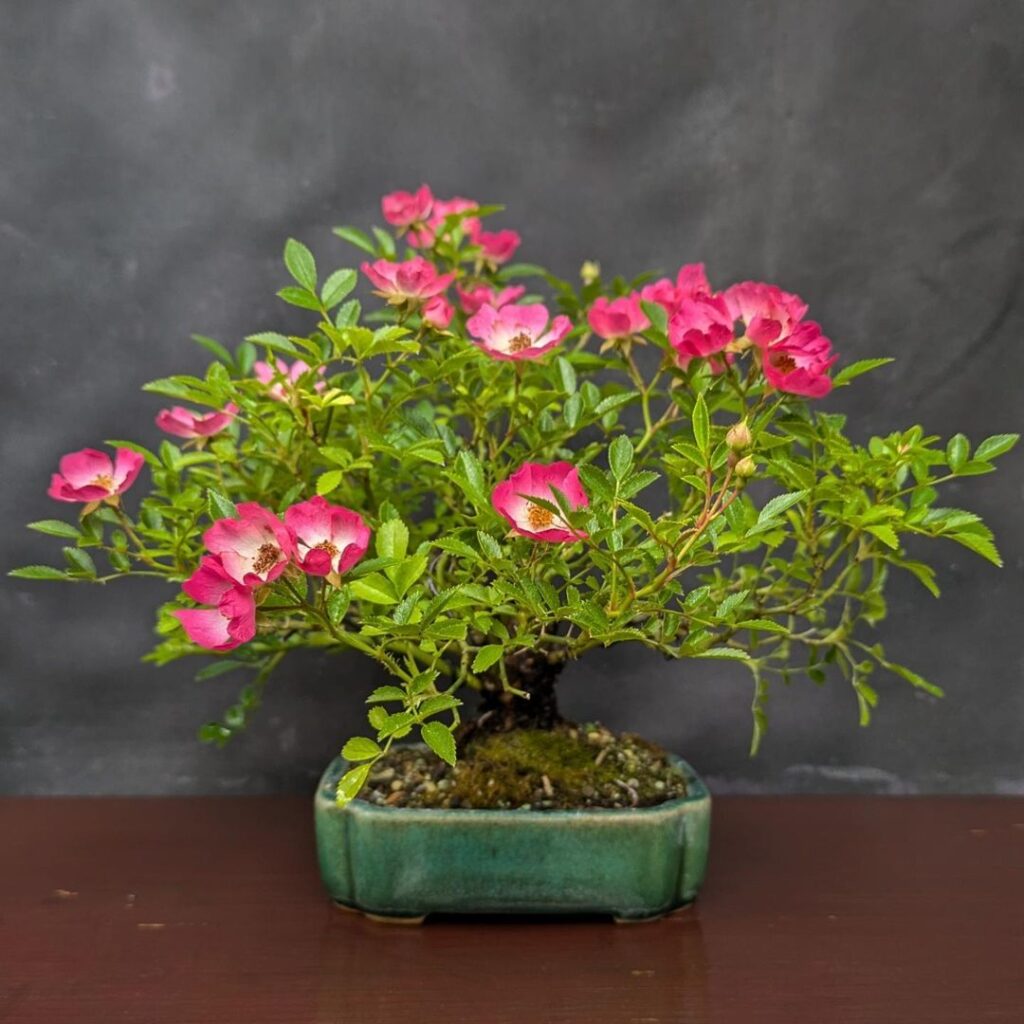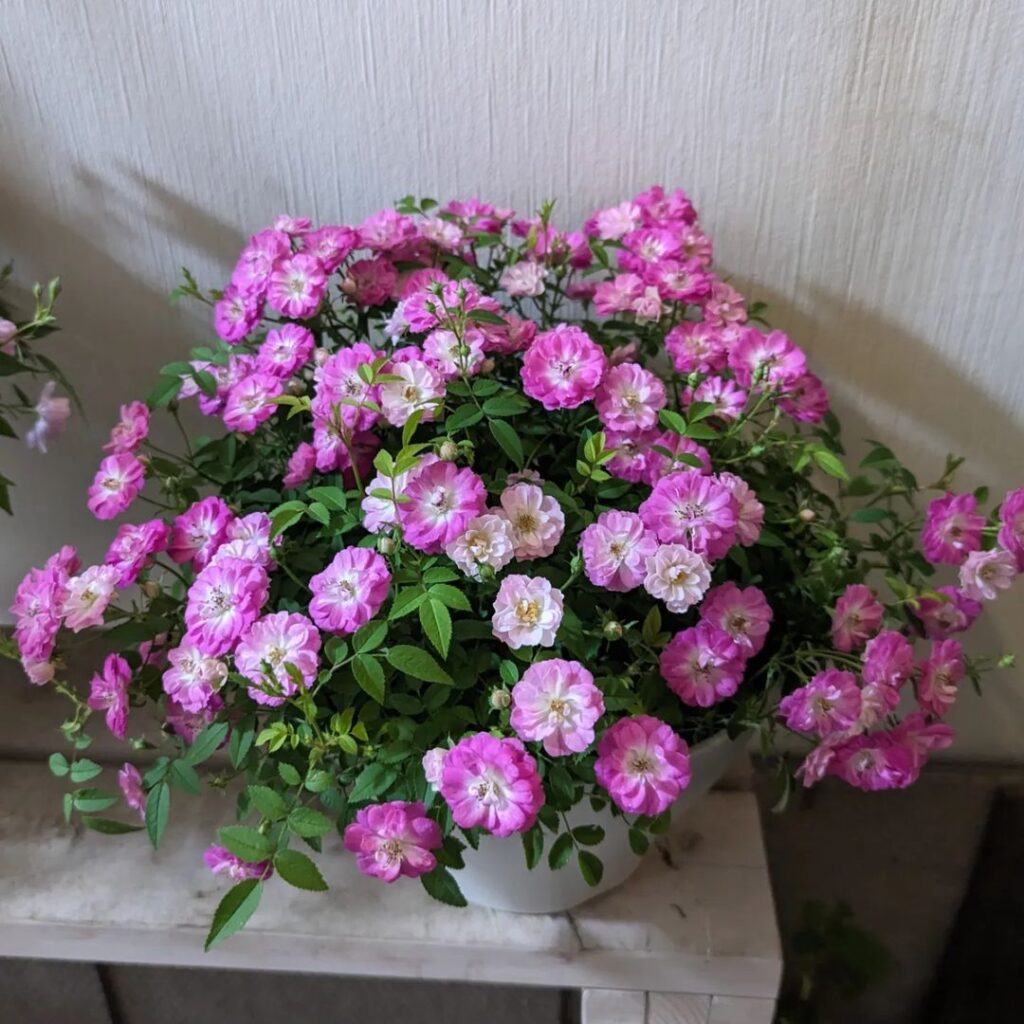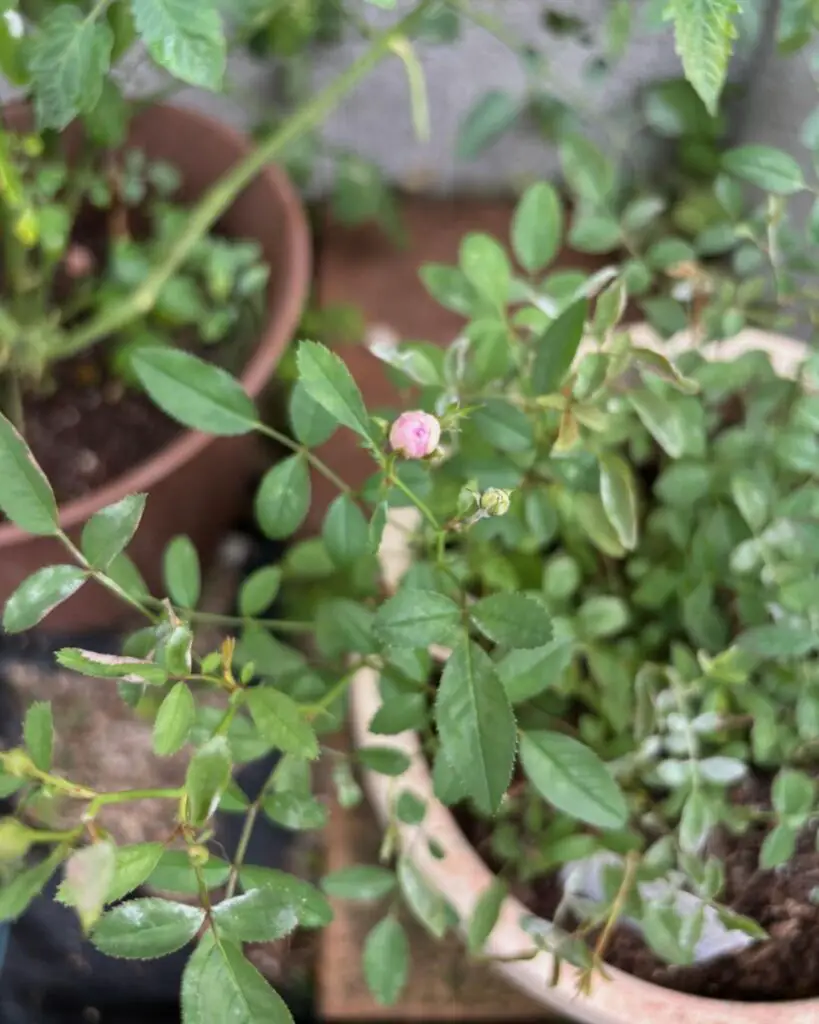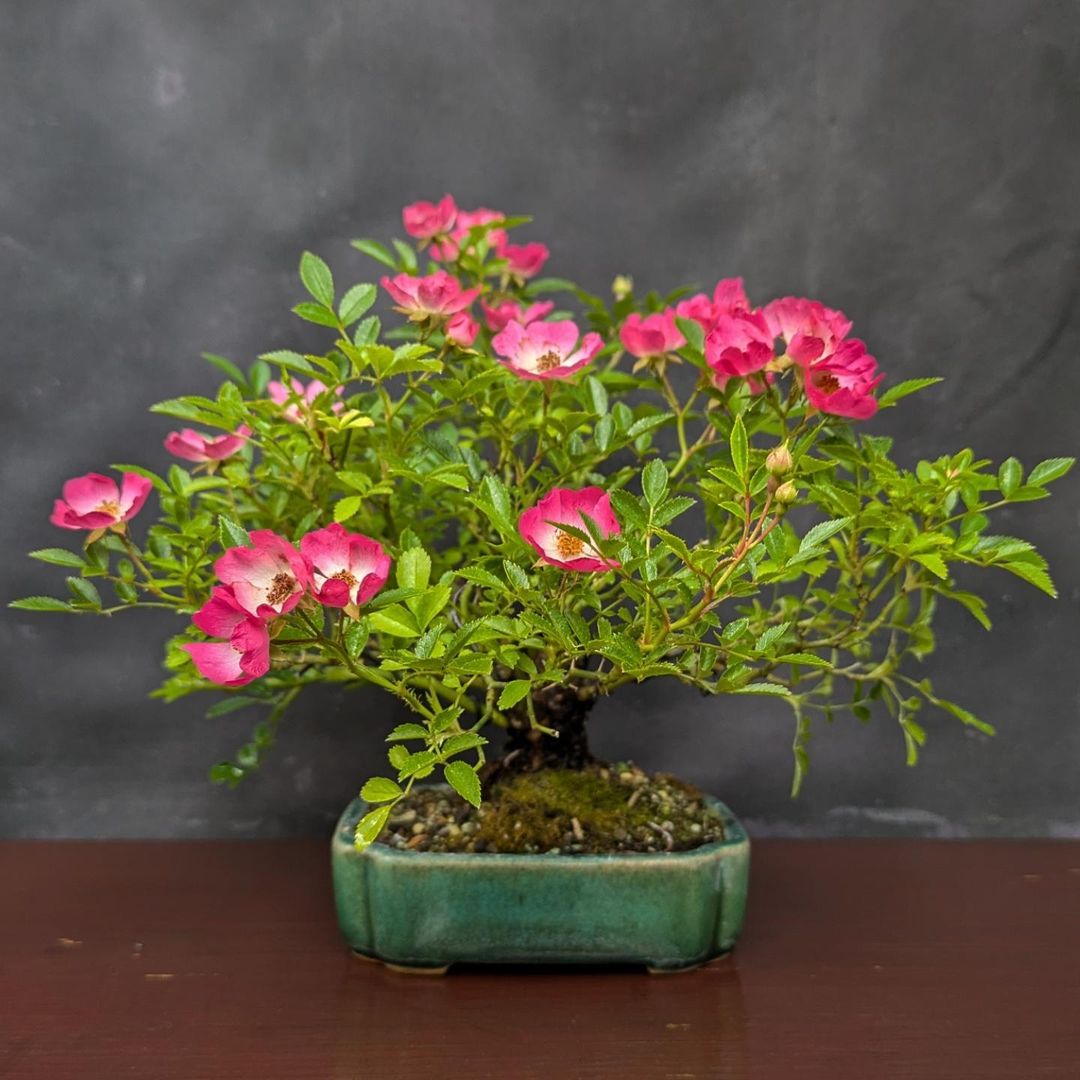Indoor Miniature Rose Care: Cultivating Beauty in Every Corner
Nurturing miniature roses indoors transforms any space into a floral oasis, where elegance meets practicality. These petite wonders, known for their vibrant blooms and compact size, offer a delightful challenge to both seasoned gardeners and novices alike. Imagine a window sill adorned with bursts of color year-round, or a cozy corner brightened by the delicate fragrance of roses—such is the magic of cultivating miniature roses indoors.
In this guide, we delve into the art of caring for miniature roses within the comfort of your home. From selecting the perfect varieties to mastering the essentials of watering and light exposure, each aspect plays a crucial role in ensuring these diminutive beauties thrive. Whether you’re a city dweller longing for a touch of nature or a dedicated enthusiast expanding your indoor garden repertoire, mastering miniature rose care promises a rewarding journey filled with bloom-filled seasons and endless admiration.

Indoor Miniature Rose Care
We’ll discuss the topic step by step. So, bear with us, and let’s dive into it:
What is an Indoor Miniature Rose?
Indoor miniature roses are compact varieties specifically bred to thrive in indoor environments. They typically range from 6 to 18 inches in height, making them ideal for small spaces such as apartments, offices, or even as tabletop decorations. These roses boast all the charm and beauty of their larger counterparts but require less space and maintenance.
Miniature roses are available in a stunning array of colors, including shades of red, pink, yellow, and white. They are prized for their abundant blooms, which can appear throughout the year under proper care. These roses prefer bright, indirect light and thrive in well-drained soil. Regular watering is essential, keeping the soil consistently moist but not waterlogged.
Their petite size makes them versatile for various indoor settings, from windowsills to shelves or as part of a larger indoor garden. With the right conditions and attention, indoor miniature roses can bloom profusely, bringing joy and elegance to any indoor space.

Benefits of Indoor Miniature Roses
Indoor miniature roses offer more than just aesthetic appeal; they bring numerous practical benefits to indoor gardening enthusiasts:
1. Space Efficiency:
- Ideal for small spaces such as apartments or offices.
- Compact size allows for placement on windowsills, desks, or shelves.
2. Year-Round Blooms:
- Continuously flowering with proper care, providing color even in winter.
- Varied bloom colors and forms enhance indoor decor throughout the seasons.
3. Air Purification:
- Act as natural air purifiers, removing toxins like formaldehyde and benzene.
- Improve indoor air quality, promoting a healthier living environment.
4. Therapeutic Value:
- Cultivating and caring for plants can reduce stress and improve mood.
- Interaction with nature indoors contributes to relaxation and well-being.
5. Educational Opportunities:
- Ideal for teaching children about plant care and growth cycles.
- Encourages learning about botany and horticulture in a hands-on manner.
Indoor miniature roses combine beauty with practicality, making them a versatile choice for enhancing indoor spaces while providing health and educational benefits.
How to Care for Indoor Miniature Roses
Indoor miniature roses require attentive care to flourish year-round. Here’s how to ensure your petite blooms thrive:

Choosing the Right Pot to Prevent Root Rot
Selecting the appropriate pot is crucial for preventing root rot in indoor miniature roses. Here’s a detailed guide to help you make the right choice:
1. Size and Drainage:
- Opt for a pot that is 1-2 inches larger in diameter than the current root ball.
- Ensure the pot has drainage holes to allow excess water to escape, preventing waterlogging.
2. Material:
- Choose pots made of breathable materials like terracotta or ceramic, which help to aerate the soil and prevent moisture buildup.
- Avoid plastic pots for long-term use as they can retain more moisture, increasing the risk of root rot.
3. Depth:
- Miniature roses have shallow roots, so a pot with a depth of 6-8 inches is sufficient.
- Deeper pots can hold excess water at the bottom, potentially leading to root rot.
4. Insulation:
- Consider pots with insulation properties, especially if your indoor environment experiences temperature fluctuations.
- Insulated pots help maintain stable soil temperatures, which are beneficial for root health.
Choosing the right pot ensures optimal growing conditions for your indoor miniature roses, minimizing the risk of root rot and promoting healthy growth and blooming throughout the year.
Optimal Placement: Finding the Sunniest Spot for Indoor Miniature Roses
To ensure the health and vigor of indoor miniature roses, proper placement is crucial. These plants thrive in bright, indirect light, ideally receiving a minimum of 6 hours of sunlight daily. Placing them near a south-facing window provides optimal light exposure, which is essential for robust growth and abundant flowering.
South-facing windows typically receive the most sunlight throughout the day, making them ideal for plants that require ample light. Rotate the pots regularly to ensure all sides of the plant receive even light, preventing the risk of uneven growth or leaning towards the light source.
For areas with less natural light, consider supplementing with artificial grow lights designed for plants, ensuring they receive the necessary light spectrum for photosynthesis and overall health. Proper placement ensures your indoor miniature roses thrive, producing vibrant blooms and maintaining their compact, attractive form year-round.
Checking Soil Moisture Twice Per Week in Hot Weather
During hot weather, monitoring soil moisture is crucial for the health of indoor miniature roses. Here’s why and how to do it effectively:
Indoor miniature roses are sensitive to both underwatering and overwatering, which can lead to stress, wilting, and even root rot. In hot weather, evaporation rates increase, necessitating more frequent checks. Aim to maintain moist (not waterlogged) soil, as roses prefer consistent moisture levels to thrive.
Use your fingers to gauge moisture levels: Insert them into the soil up to the second knuckle. If it feels dry, it’s time to water. In extremely hot conditions, you may need to water more frequently—potentially every 2-3 days, depending on humidity levels and pot size. This proactive approach helps prevent moisture stress and promotes healthy growth and flowering throughout the summer.
Water Properly
Proper watering is crucial for the health and vigor of indoor miniature roses. These delicate plants require consistent moisture without being waterlogged. Here’s how to ensure you water your indoor miniature roses effectively:
1. Understanding Watering Needs:
Indoor miniature roses prefer slightly moist soil. Check the top inch of soil regularly; water when it feels dry to the touch. Overwatering can lead to root rot, while underwatering can cause stress and leaf drop.
2. Watering Techniques:
Use room temperature water to avoid shocking the roots. Water directly onto the soil around the plant, avoiding wetting the foliage to prevent fungal diseases.
3. Frequency:
Water deeply when needed, ensuring water reaches the root zone. During active growth periods, typically spring and summer, water more frequently. Reduce watering in winter when growth slows.
4. Drainage:
Ensure pots have drainage holes to allow excess water to escape. This prevents waterlogging, which can suffocate roots and lead to plant decline.
5. Water Quality:
Use filtered or distilled water if your tap water is high in salts or chemicals, which can harm sensitive rose roots.
By following these watering guidelines, you’ll help your indoor miniature roses thrive, promoting healthy growth and abundant blooms year-round.
Winter Care for Indoor Miniature Roses
During winter, indoor miniature roses require special attention to survive and thrive until spring. Here’s how to ensure they stay healthy and vibrant:
1. Temperature Control:
- Maintain temperatures between 55-60°F (13-15°C) to simulate their natural dormancy.
- Avoid sudden temperature fluctuations and drafts.
2. Reduced Watering:
- Water sparingly, allowing the top inch of soil to dry out between waterings.
- Overwatering can lead to root rot, especially in cooler temperatures.
3. Humidity Management:
- Indoor heating can dry the air; use a humidity tray or room humidifier to maintain adequate moisture levels.
- Avoid misting as it can promote fungal diseases in cool conditions.
4. Light Adjustment:
- Provide bright, indirect light during winter months.
- Supplement with grow lights if natural light is insufficient, ensuring 10-12 hours of light daily.
5. Fertilization:
- Cease fertilizing during winter dormancy.
- Resume feeding with a balanced fertilizer in early spring as new growth appears.
6. Pruning and Maintenance:
- Prune lightly to remove dead or leggy growth, promoting compactness.
- Monitor for pests and diseases, treating promptly if detected.
7. Draft Protection:
- Shield plants from cold drafts and ensure they’re not placed near heaters or vents.
- Use curtains or insulating materials around windows to minimize temperature fluctuations.
8. Monitoring:
- Regularly inspect leaves and stems for signs of stress or disease.
- Adjust care based on the plant’s response to winter conditions.
By implementing these winter care strategies, you’ll help your indoor miniature roses rest and rejuvenate, ensuring they’re ready to bloom beautifully when spring arrives.
Air Circulation
Proper air circulation is crucial for the health of indoor miniature roses. It helps prevent fungal diseases, enhances nutrient uptake, and promotes overall plant vigor. Here’s why it matters:
1. Disease Prevention:
- Good air circulation reduces humidity around leaves, minimizing the risk of fungal infections like powdery mildew and black spot.
- Adequate airflow prevents stagnant moisture that can attract pests such as aphids and spider mites.
2. Nutrient Absorption:
- Air movement stimulates transpiration, facilitating the uptake of nutrients from the soil.
- It ensures oxygen reaches the roots, promoting healthy growth and preventing root rot.
3. Temperature Regulation:
- Air circulation helps regulate temperature extremes around the plant, maintaining optimal growing conditions.
- It prevents heat buildup, especially in indoor environments with artificial lighting or heating.
4. Pruning and Training Benefits:
- Well-aerated plants respond better to pruning and training, as airflow reduces the risk of wounds becoming entry points for diseases.
- Proper air circulation aids in shaping the plant and maintaining its compact form, typical of miniature roses.
Ensuring adequate air circulation around your indoor miniature roses contributes significantly to their overall health and longevity, making it a vital aspect of their care regimen.
Prune Back Your Indoor Miniature Roses
Pruning indoor miniature roses is crucial for maintaining their health and promoting abundant blooms. Here’s how to prune effectively:

1. Timing:
- Prune in early spring before new growth begins to encourage vigorous flowering.
2. Tools:
- Use sharp, clean pruning shears to make precise cuts without damaging stems.
3. Deadheading:
- Remove spent flowers by cutting just above the first leaf with five leaflets to stimulate new growth.
4. Shape and Size:
- Maintain a compact shape by trimming back any overly long or straggly stems.
- Aim to keep the plant balanced and symmetrical.
5. Disease and Pest Control:
- Prune away any diseased or damaged branches to prevent the spread of infections.
- Inspect regularly for pests like aphids or spider mites; remove affected areas promptly.
6. Light and Air Circulation:
- Thin out dense growth to improve air circulation around the plant.
- Ensure all parts of the plant receive adequate light for even growth.
7. Training:
- Train young stems to grow outward to prevent overcrowding in the center of the plant.
- Use ties or stakes to support heavier branches if necessary.
8. Frequency:
- Regularly prune throughout the growing season to maintain shape and encourage continuous blooming.
- Avoid heavy pruning during winter to prevent stress on the plant.
9. Aftercare:
- Apply a balanced fertilizer after pruning to support new growth.
- Monitor the plant for a few weeks post-pruning to ensure it responds well.
10. Final Touches:
- Clean up debris and sterilize tools after pruning to prevent the spread of diseases.
- Enjoy a healthier, more vibrant indoor miniature rose plant with regular and careful pruning.
Fertilizer for Indoor Miniature Roses
Indoor miniature roses benefit from a balanced fertilization regimen to support healthy growth and abundant blooms. Here’s how to nourish your miniature roses effectively:
Miniature roses thrive with a balanced fertilizer, such as a 10-10-10 formula, which provides equal parts nitrogen (N), phosphorus (P), and potassium (K). This balance promotes overall plant health, strong roots, and vibrant flowers.
1. Application Frequency:
- Apply fertilizer every 4-6 weeks during the growing season (spring to early fall).
- Reduce frequency to every 8-12 weeks in winter when growth slows.
2. Application Method:
- Use a water-soluble fertilizer diluted to half strength to avoid root burn.
- Apply directly to damp soil to facilitate nutrient absorption.
3. Organic Options:
- Consider organic fertilizers like compost or fish emulsion for a gentler, slower-release option.
- These provide essential nutrients while improving soil structure and microbial activity.
4. Micronutrients:
- Ensure the fertilizer includes micronutrients such as iron, manganese, and zinc.
- These nutrients are crucial for maintaining healthy foliage and vibrant flower color.
5. Avoid Overfeeding:
- Follow package instructions carefully to prevent fertilizer burn.
- Flush soil occasionally with plain water to remove excess salts from fertilizers.
By providing the right balance of nutrients and following these guidelines, you can ensure your indoor miniature roses remain vigorous and continue to grace your home with their beauty year-round.
Deadhead Management for Indoor Miniature Roses
Deadheading, the practice of removing spent blooms, is crucial for maintaining the health and beauty of indoor miniature roses. Here’s why it matters:
Benefits of Deadheading:
- Promotes Continuous Blooming: Removing faded flowers encourages the plant to produce new blooms, extending the flowering season.
- Enhances Aesthetic Appeal: Keeps the plant looking tidy and encourages the growth of new healthy buds.
- Prevents Seed Formation: Redirects the plant’s energy from seed production to root and foliage growth, resulting in stronger, healthier roses.
How to Deadhead:
- Identify Spent Blooms: Look for blooms that have wilted or faded in color.
- Prune Correctly: Use clean, sharp scissors or pruning shears to cut just above the first set of five leaflets.
- Regular Maintenance: Deadhead roses weekly during the growing season to maximize flowering.
By incorporating regular deadheading into your indoor rose care routine, you can ensure your miniature roses remain vibrant and continue to bloom profusely throughout their growing season.
When to Transplant Miniature Roses Indoors
Transplanting miniature roses indoors should be timed carefully to promote healthy growth and minimize stress on the plants:
Timing:
- Spring: Optimal time for transplanting, typically after the last frost. Cooler temperatures and increased daylight stimulate root growth.
- Early Fall: Another suitable period, allowing roots to establish before winter dormancy.
Signs It’s Time:
- Root-bound plant: Roots visibly circling around the pot or emerging from drainage holes.
- Reduced blooming or stunted growth despite proper care.
- Soil drying out quickly or roots pushing the plant out of the pot.
Steps to Transplant:
- Choose a slightly larger pot with drainage holes.
- Prepare well-draining soil mixed with compost.
- Gently remove the plant from its current container, loosening roots if tightly bound.
- Place in the new pot, ensuring the crown sits just above soil level.
- Water thoroughly and place in a location with adequate sunlight.
Benefits:
- Stimulates new root growth and enhances nutrient uptake.
- Prevents overcrowding and allows for fresh soil, reducing disease risk.
- Promotes overall plant health and vigor for continuous blooming indoors.
Frequently Asked Questions
1. Can miniature roses thrive indoors?
Miniature roses can thrive indoors with proper care. Choose a compact variety suited for indoor conditions, provide ample sunlight (at least 4-6 hours daily), maintain consistent watering without waterlogging, and ensure good air circulation. Regular pruning and fertilizing during the growing season will encourage healthy growth and abundant blooms.
2. How often should miniature roses be watered indoors?
Indoor miniature roses should be watered thoroughly when the top inch of soil feels dry to the touch. Water deeply, allowing excess water to drain out from the bottom of the pot. Avoid letting the roots sit in water, as this can lead to root rot. Adjust watering frequency based on environmental conditions and humidity levels.
3. What is the best location for indoor miniature roses?
Choose a location that receives plenty of bright, indirect sunlight. A south-facing window is ideal, but east or west-facing windows can also work, provided the roses receive at least 4-6 hours of sunlight daily. Rotate the plants periodically to ensure even growth and exposure to light on all sides.
4. How do you fertilize miniature roses grown indoors?
Fertilize indoor miniature roses during the growing season (spring through early fall) with a balanced water-soluble fertilizer diluted to half-strength. Apply every 2-4 weeks according to package instructions. Reduce fertilization during the winter months when growth slows. Always water the plant before and after applying fertilizer to prevent root burn.
Conclusion
In conclusion, cultivating miniature roses indoors offers a delightful way to bring beauty and fragrance into any living space. With careful attention to light, watering, and proper pruning, these compact wonders can thrive and bloom year-round. Whether adorning a sunny windowsill or brightening a cozy corner, miniature roses reward gardeners with their colorful displays and charming presence.
By understanding their specific needs and providing a nurturing environment, anyone can enjoy the satisfaction of successful indoor rose gardening, creating a miniature garden sanctuary that enhances both the home’s ambiance and the gardener’s spirit.

I’m Shofi, a passionate gardener and blogger. I have 10+ years of experience in gardening and hold certifications in horticulture and garden design. I share my knowledge and skills through my garden blog to inspire and educate others on the joys of gardening. I try to provide valuable information and create a community for gardeners of all levels to connect and learn. My ultimate goal is to inspire others to start their own gardens and connect with nature.

